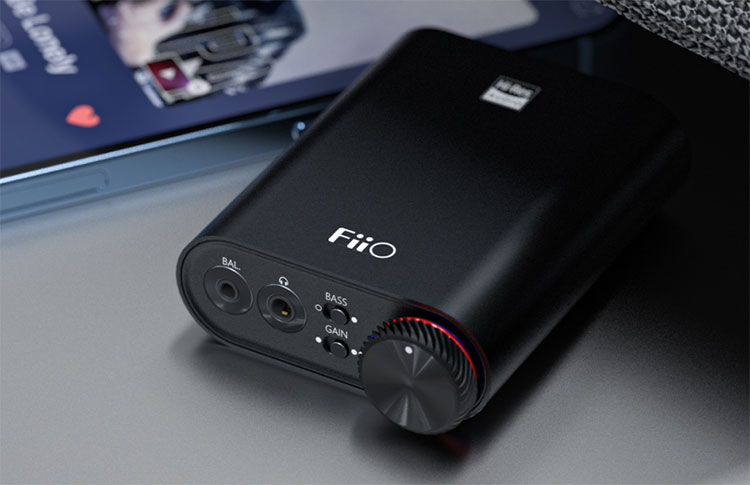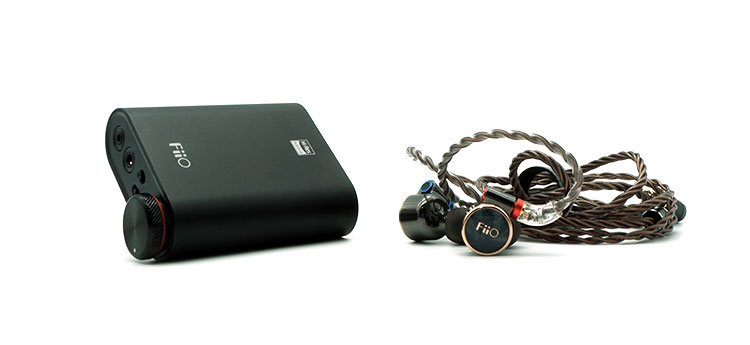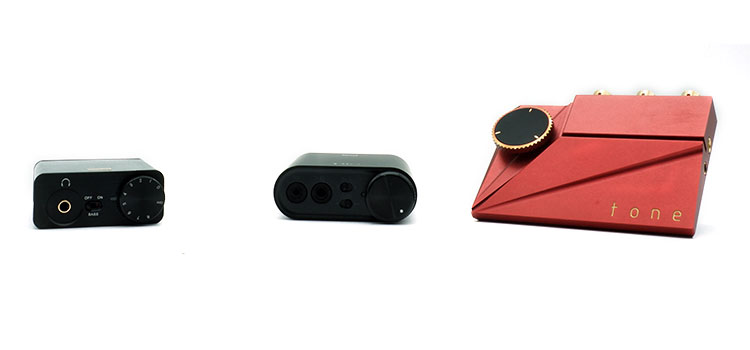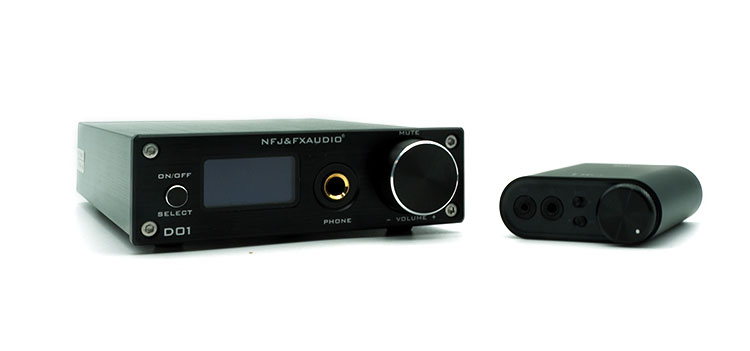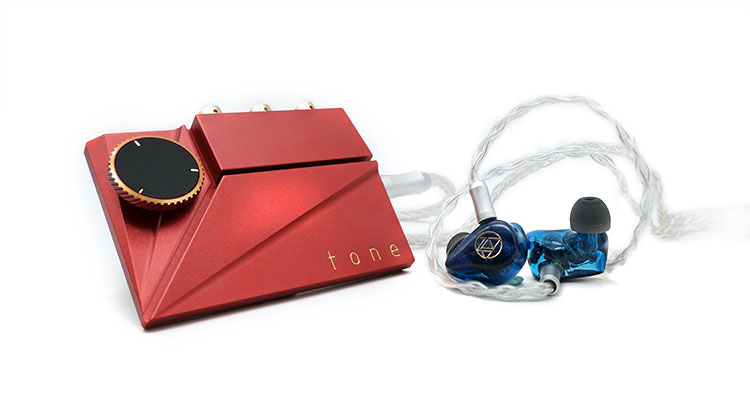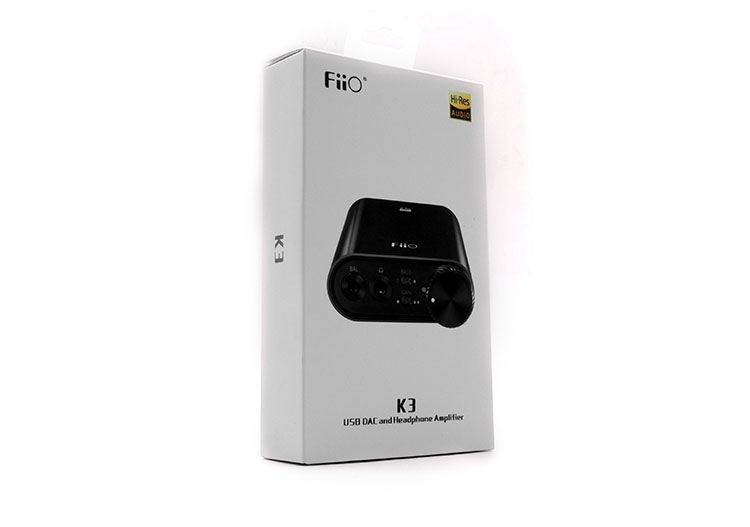Synergy
Power
Despite being a smaller device, the new K3 can power larger headphones than its size might imply. Since the Audeze LCD-X is one of the least demanding planar magnetic headphones in the market, I tried plugging it into the new K3, and I was impressed by the fact that I didn’t have to crank up the volume beyond 5 o’clock on the volume dial with low gain.
I then moved over to a dynamic driver headphone in the Sennheiser HD600, with the balanced outputs, I only needed to turn up the volume knob to 5 o’clock on high gain to achieve the highest comfortable listening levels.
Pushing it further, I also tried the Sendy Peacock, which is a more power-hungry planar magnetic driver, and this is where I found the K3 struggle and I ended up needing to switch on the bass boost to prevent it from being too lean when driven off the new K3.
With IEMs on the other hand, I tried most of the IEMs that I have, the new K3 easily managed most of them only running most of them on low gain most of the time. With FiiO’s FD1, I only needed around 3 o’clock on low gain to achieve the highest volume I can bear.
Similarly, with the FD3, I needed a bit less than 3 o’clock for my maximum bearable volume levels. With all my tests on IEMs, I never heard any hiss throughout the volume range.
Pairings
Being a generally neutral DAC/Amp, the new K3 is an easy DAC/Amp to pair with. It plays nicely with most headphones, allowing their soundstage to flourish while having fairly accurate imaging given the limitations of the power supply.
Headphones like the HD600 that innately have an accurate imaging presentation are not limited by the new K3. The lusher vocal presentation of the HD600 is also allowed to shine through, while the slight bump in the midbass gives the HD600 an extra sense of warmth.
Being a mini desktop DAC/Amp, it’s also a great companion for IEM listening, in fact, it can even be used together with a phone to create a transportable setup.
I first tried it with the dual BA Rock-It Sounds R-50, which is an IEM that has a more closed-in presentation. However, plugging it into the new K3 breathed more air into the presentation, allowing images to have more space between each other while allowing the warmer and punchier presentation to shine through.
With FiiO’s own FD3, which is a semi-open back design, the added airiness gives images a better sense of life-like shape while maintaining the FD3’s wider soundstage presentation.
The pairing with the new K3 also allows the FD3’s bass to maintain the neutral presentation while having a bit more weight behind each drum hit or bass note while keeping the honest midrange presentation.
Select Comparisons
FiiO E10K TC
$82
Technical
It’s interesting to see that both the K3 and the FiiO’s classic E10k had a refresh this year. One of the biggest improvements on the E10k is the inclusion of a USB C port, which is the same as the new K3
Internally, both DACs now use the same XMOS XU208 USB controller, however, the E10k doesn’t employ an MCU chip. Also, the E10k uses a PCM5102 DAC chip, which is the same DAC chip that it has been using since the previous iteration.
Surprisingly, both DACs have the same rated power output, where the E10k TC’s 214mW output into 32Ω through the single-ended output closely matches the rated power output of the new K3’s balanced out.
When it comes to SNR, the E10k performs at a notch lower than the new K3 with a noise floor of 114dB, and a THD of 0.006%. Although both DACs numbers are impressive, the E10k TC’s numbers are still a notch lower.
Design
Both DACs have a recycled design, but the E10k TC has a more dated aesthetic since the original E10k is a generation older.
The layout of both devices is quite similar though, but the E10k TC has fewer options than the new K3 with just a 3.5mm single-ended headphone output. Both have a switch for a bass boost in front, but the gain switch on the E10k TC is located at the rear of the device.
The volume knob on both devices has similar functionality, it’s just that the E10k TC kept a more classic look. While both devices have options for analog and digital outputs, the E10k TC only has a coaxial digital output, but no option for the new K3’s optical digital output.
Performance
Coming from the same company and being released at about the same time, I was expecting that these 2 devices would sound very similar. However, there are some striking differences in the presentation compared to the new K3.
The bass on E10k TC is a bit more subdued, and I dare say comparatively rolled off. Also, the presentation of the bass has distinctly less weight, while having less snap comparatively.
The midrange on both devices is similar, but the texture is just a smidge less distinct on the E10k TC. Treble on the other hand is more smoothed over, making sure that the E10k TC doesn’t become sibilant while giving it an overall smoother presentation.
While both DACs can present a wide soundstage, the soundstage on the E10k TC sounds comparatively more compressed. Also, the images within the soundstage are just less chiseled, while still being able to depict a good sense of directionality within the soundstage.
FX Audio D01
$149
Technical
The new K3 and the D01 both use an XMOS XU208 USB controller, while the DAC chip on this pair is the same ESS9038Q2M. However, the D01’s decoding capabilities top out at a higher sampling rate of 32bit/768kHz, and DSD512.
In reality, both devices are still secure for the foreseeable future, since they are both capable of decoding files way above what’s available in the market.
When it comes to the headphone amplifier section, the D01 has a TPA6120A2-based headphone amplifier, which maxes out at 400mW into 32Ω, but it is only limited to a ¼” single-ended output. Being a larger device, and requiring an external power supply, I expected the D01 to push out more power into its headphone outputs.
Aside from the higher power headphone output, the D01 has more input options than the new K3 including Bluetooth, coaxial, optical, and of course USB. However, the D01 has more limited output options compared to the new K3, with only a pair of RCA jacks at the rear, and no option for digital outputs.
Design
When looking at the 2 DACs, the D01 looks less polished, with a more standard-looking brushed aluminum case, and it looks rougher around the edges. However, the D01 has a small screen that indicates sample rate, input, and volume levels, which makes information much clearer than just looking at the volume knob and RGB light.
The front is much busier with the inclusion of an LCD screen, and a power button/selector switch. At the rear, the D01 is also busier, having more input options overall. The much larger footprint and the requirement of AC power on the D01 make it much less convenient for use with a transportable setup though.
Performance
With an external power supply, I was expecting the D01 to sound the larger of the 2 devices. However, the D01 bass response ended up being more rolled off, while having a leaner presence in the bass region. The immediacy of the attack in the bass region is equally prominent with both DAC/Amps though.
The midrange is about equally textured, but the D01 is simply more colored, adding a tinge of euphony and richness into the vocal range, while adding some smoothness to acoustic instruments. Although both DAC/Amps present an equally forward treble range, the D01 is simply smoother, and comparatively lacks bite and edge.
I was expecting the soundstage to be wider with the D01, but in reality, it’s similar between the 2 devices. The images formed by the D01 are still accurate, but are comparatively less vivid and have a more blurry sense of substance and directionality. The depth within the soundstage is equal though, with the D01 edging out the K3 in terms of how far the images are formed.
Khadas Tone2 Pro
$199
Technical
The USB controller on the Tone2 Pro is an XMOS XU216 and shares the same ESS 9038Q2M DAC chip as the new K3. The XU216 USB controller on the Tone2 Pro allows it to decode MQA files in addition to decoding PCM files up to 32bit/384kHz, and DSD 512.
The headphone output section on both devices is also very similar. Both have a single-ended and balanced option with the Ton2 Pro rated very similar to the new K3 at 211mW into 32Ω balanced and 114mW into 32Ω compared to 200mW and 114mW for the new K3.
While both devices have a USB C input, the Tone2 Pro also allows for an external power supply using another USB C port that can also be used for future expansion for a Bluetooth adaptor.
The Tone2 Pro’s line out is a fixed output, while the RCA terminals can double as a balanced output using Khadas’ proprietary balanced RCA cables. Finally, the Tone2 Pro also has a coaxial input, while having no option for any digital outputs.
Design
I/O’s are similar. The Tone2 Pro’s layout is a little different, with the volume knob being on top of the device. Both use RGB lighting behind the volume knob, however, Tone2 Pro’s volume knob allows for a more comprehensive set of functions since it can be used to change the input mode, as well as change the gain settings.
The Tone2 Pro is also less busy looking overall, as it uses the volume knob for all functions, instead of adding extra switches but it doesn’t have a bass boost option.
On the side of the Tone2 Pro, there are 2 headphone outputs, but this time, the Tone2 Pro’s balanced output option is a 4.4mm balanced, instead of 2.5mm balanced. Single-ended output is the same 3.5mm TRS output on both it and the new K3.
Finally, the rear layout is a bit busier with the Tone2 Pro compared to the new K3, using all full-sized RCA outputs, instead of a 3.5mm TRS jack. Also, there is an option to connect an external power supply, so it can be used to clean up dirtier USB bus power.
Performance
The Tone2 Pro and the new K3 strive to stay neutral, but, surprisingly, both of them have a similar mid-bass hump. However, the one on the Tone2 Pro is just a touch more pronounced compared to the new K3, while still maintaining a clean bass response that doesn’t bleed into the other frequencies. This allows the Tone2 Pro to create an even weightier bass response.
Vocal range is not particularly colored on either device, so both of them can be described to have an honest vocal response. Neither will add euphony, but the Tone2 Pro just has more weight in the vocal range, allowing the vocalist to become more tangible in the process.
Treble frequencies aren’t particularly pronounced on either device, so the speed and the edge in each cymbal hit can easily be presented. The Tone2 Pro’s treble response is simply not as extended, and therefore less airy.
When comparing the 2 DAC/Amps, the biggest difference is the overall weight behind each note, where the Tone2 Pro simply supplies a more tangible image. However, the less airy response allows the images to overlap more compared to the new K3.
With both devices having a USB C port as their primary power source, they are a bit limited in dynamics. However, the Tone2 Pro seems to make things louder in contrast to the more balanced dynamic response on the new K3.
Our Verdict
Being a refresh of an older product, the new K3 does a great job by updating most of the internal components to compete with the market in 2021. Adding in a new DAC chip which is part of ESS’ top-of-the-line 9038 range, while still maintaining a compact footprint making it suitable for even crowded desktop environments.
With an overall balanced signature, the new K3 is a great match with most headphones, allowing the headphones to sound neutral and natural.
Although there are some limitations in terms of the speed of attack and overall dynamics due to the USB bus power supply, the new K3 manages to be surprisingly airy while presenting good image separation and depth.
FiiO New K3 Technical Specifications
- Weight: about 82g
- Max Sampling Rate: 384kHz-32bit/DSD256
- USB Controller: XMOS XU208
- DAC Chip: ESS 9038Q2M
- Headphone amp: OPA926×2
- Input: USB C
- Power output(balanced): 220mW @ 32Ω
- Power Output(single-eneded): 120mW @ 32Ω
- SNR: ≥119dB (A-weighted)

